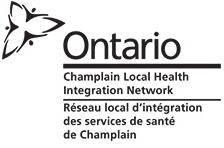
Etiology
- Genetics
-
Primary etiology
- Developmental delay or immaturity in central control of bladder function
-
Psychosocial
- Most with enuresis show no symptoms of emotional/behavioural disturbance
- Sleep studies have demonstrated a random pattern of wetting that occurs in all stages of sleep in proportion to the amount of time spent in each stage.
-
Subgroups
- A subgroup of enuretic patients has been identified where there is no arousal to bladder distention, along with unusual pattern of uninhibited bladder contractions before the enuretic episode, suggesting a dysfunctional arousal system during sleep as the causal factor.
- Obstructive sleep apnea from upper airway obstruction associated with enuresis.
Diagnosis
DSM-IV-TR
- Repeated voiding of urine into the bed or clothes at least twice per week for at least three consecutive months in a child who is at least 5 years of age
- Duration may be less if there is associated distress or functional impairment
-
Terms
- Nocturnal enuresis: Voiding during sleep
- Diurnal enuresis: Voiding while awake
- Primary enuresis: Child has never been consistently dry through the night
- Secondary enuresis: Wetting that occurs after at least 6 months of dryness.
Differential Diagnosis
- Stress, e.g. Previously dry child who now has bedwetting during stressful period (e.g. parental separation
- Medical causes
- Obstructive sleep apnea
- Mechanical pressure on bladder, e.g. Constipation, encopresis or stool impaction suggests mechanical pressure on bladder
Physical Exam
- Enlarged adenoids or tonsils
- Bladder distention
- Fecal impaction
- Genital abnormalities
- Spinal cord anomaly
- Neurologic signs
Investigations
-
Routine
- Urinalysis
- Possibly urine culture
- More invasive tests only with specific indications
- First-morning specific gravity can help predict who will respond to desmopressin acetate (DDAVP) treatments
- 2-week baseline record of wet and dry nights
Treatment
-
If there appear to be relevant psychological issues or psychosocial stressors that may be contributing (e.g. parental separation or divorce, parental mental health issues), consider referring the child/family for counseling/psychotherapy
-
Refer to Urology if indicated
- Usual indications: Daytime wetting, abnormal voiding (unusual posturing, discomfort, straining, or a poor urine stream), a history of urinary tract infections or evidence of infection on urinalysis or culture, and genital abnormalities
-
If normal, uncomplicated monosymptomatic primary nocturnal enuresis (e.g. normal history, physical, urinalysis), consider the following usual supportive approaches:
-
Supportive approaches
- Night awakening
- Fluid restriction
- Keeping a journal
- Ensure that parents do not punish the child for enuretic episodes.
- Education
-
Supportive approaches
-
First-line behavioural approach
- Conditioning using a modern, portable, battery operated alarm along with a written contract, thorough instruction, frequent monitoring, overlearning, and intermittent reinforcement before discontinuation
Medication Treatment
-
Imipramine
- Single bedtime dose 1.0 to 2.5 mg/kg; 40-60% effectiveness, though relapse rate 50%.
-
Risks
- Cardiac arrhythmia associated with tricyclic antidepressants, including imipramine
- Baseline investigations pre-treatment
- Electrocardiogram may be obtained to detect an underlying rhythm disorder
-
DDAVP
- DDAVP is a synthetic analogue of the antidiuretic hormone (ADH) vasopressin, which decreases urine production at night when taken at bedtime
- 0.2-mg tablets in doses of 0.2 to 0.6 mg nightly
- Intranasal spray in doses of 10 to 40 μg (one to four sprays) nightly if intercurrent illness complicates the picture
- Success rates of 10-80%
- Can be prescribed for short periods, such as when the child is going to camp
About this Document
Written by members of the eMentalHealth.ca/PrimaryCare team which includes members of the Department of Psychiatry and Family Medicine at the University of Ottawa. Reviewed by members of the Family Medicine Program at the University of Ottawa, including Dr's Farad Motamedi; Mireille St-Jean; Eric Wooltorton.
Disclaimer
Information in this pamphlet is offered ‘as is' and is meant only to provide general information that supplements, but does not replace the information from a health professional. Always contact a qualified health professional for further information in your specific situation or circumstance.
Creative Commons License
You are free to copy and distribute this material in its entirety as long as 1) this material is not used in any way that suggests we endorse you or your use of the material, 2) this material is not used for commercial purposes (non-commercial), 3) this material is not altered in any way (no derivative works). View full license at http://creativecommons.org/licenses/by-nc-nd/2.5/ca/






